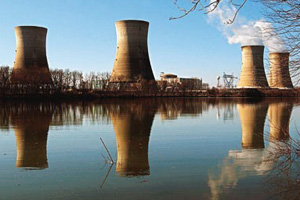The oceanic waters have been converted into large rubbish dumps over the last few years, as a result of the enormous quantity of toxic substances spilled by man. Among the main contaminant agents are:
– Oil spills: this is one of the most serious forms of marine pollution. These can be produced by the corrosion of underwater oil ducts, flaws in oil tankers that transport crude oil, the deterioration of oil company installations in marine and land zones, and oil tanker accidents, which cause the total or partial loss of oil. However, it’s worthwhile to point out that more than 50% of oil spilled each year into the ocean originates from the waste products produced by vehicles, gas stations, refineries and industries.
In this way, an oily mass known as black tide is produced in the sea, which has very harmful consequences for marine flora and fauna. For example, birds that become covered with crude oil die from frostbite in a few days, due to the fact that the oil in their feathers permits neither thermal insulation nor the impermeability of their bodies.
– Industrial pollution: some industries throw away toxic waste such as heavy metals (lead, mercury, cadmium, copper and tin), plastics and other solid waste and thermal water (it reaches a high temperature and is used for refrigeration in coal-fired and nuclear power plants and oil refineries). These pollutants kill mainly fish and plankton. As a result, animals such as seals, dolphins, turtles and marine birds are affected when they eat solid waste or are trapped among it.
– Red tide: this is a natural phenomenon that consists in an explosive increase in a group of unicellular algae, called dinoflagellates (some of red color, hence the name of the phenomenon), that make up plankton. This increase is due to different oceanic factors, such as the temperature and the salinity of the water and the presence of currents. These algae produce poison that is accumulated by mollusks, which produce poisoning when eaten by human and can lead to death.
It’s worthwhile to note that over the last few decades red tide has become more frequent as a result of the contribution of nutrients by man (for example, in sewer water).
– Waste on the sea coast: on the coasts and beaches dispersed waste such as papers, bottles and plastics can be found which finally reach the sea, contaminating it. The majority of this waste is indifferently thrown away by man.
– Pesticides: these are chemical substances that are used in agriculture and silviculture. However, when crops are found in zones near the coast, pesticides can easy flow into the sea, affecting its flora and fauna.








